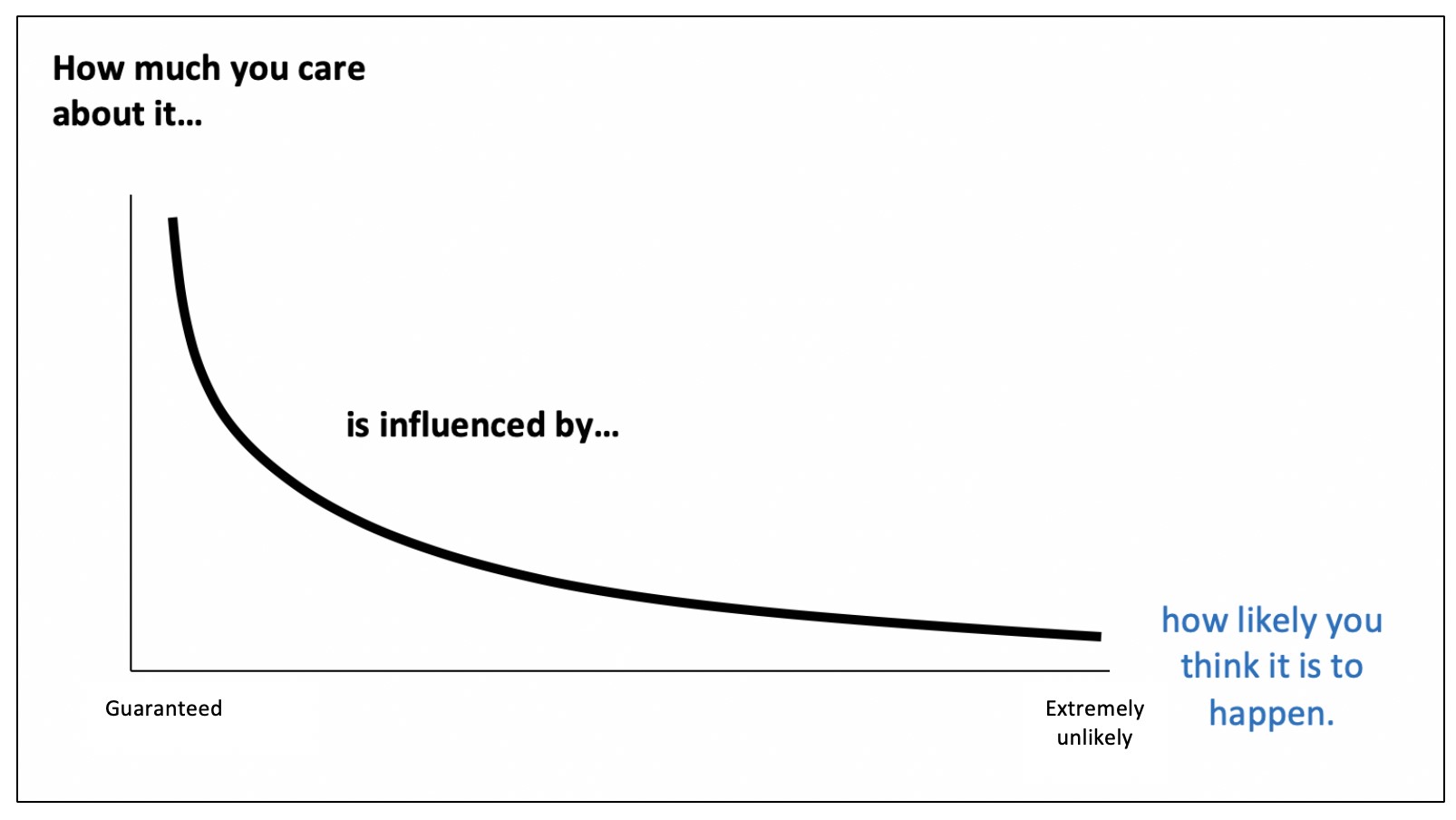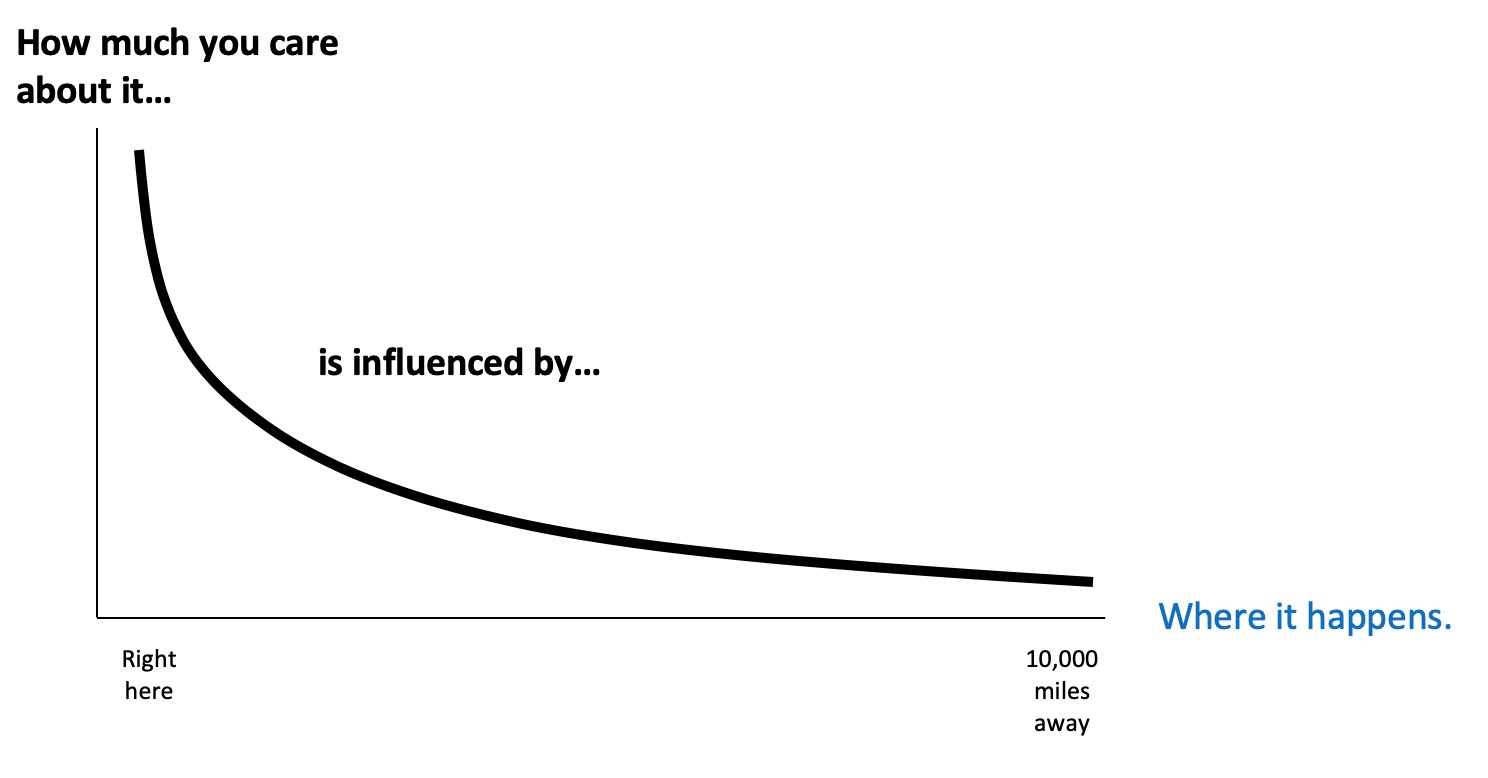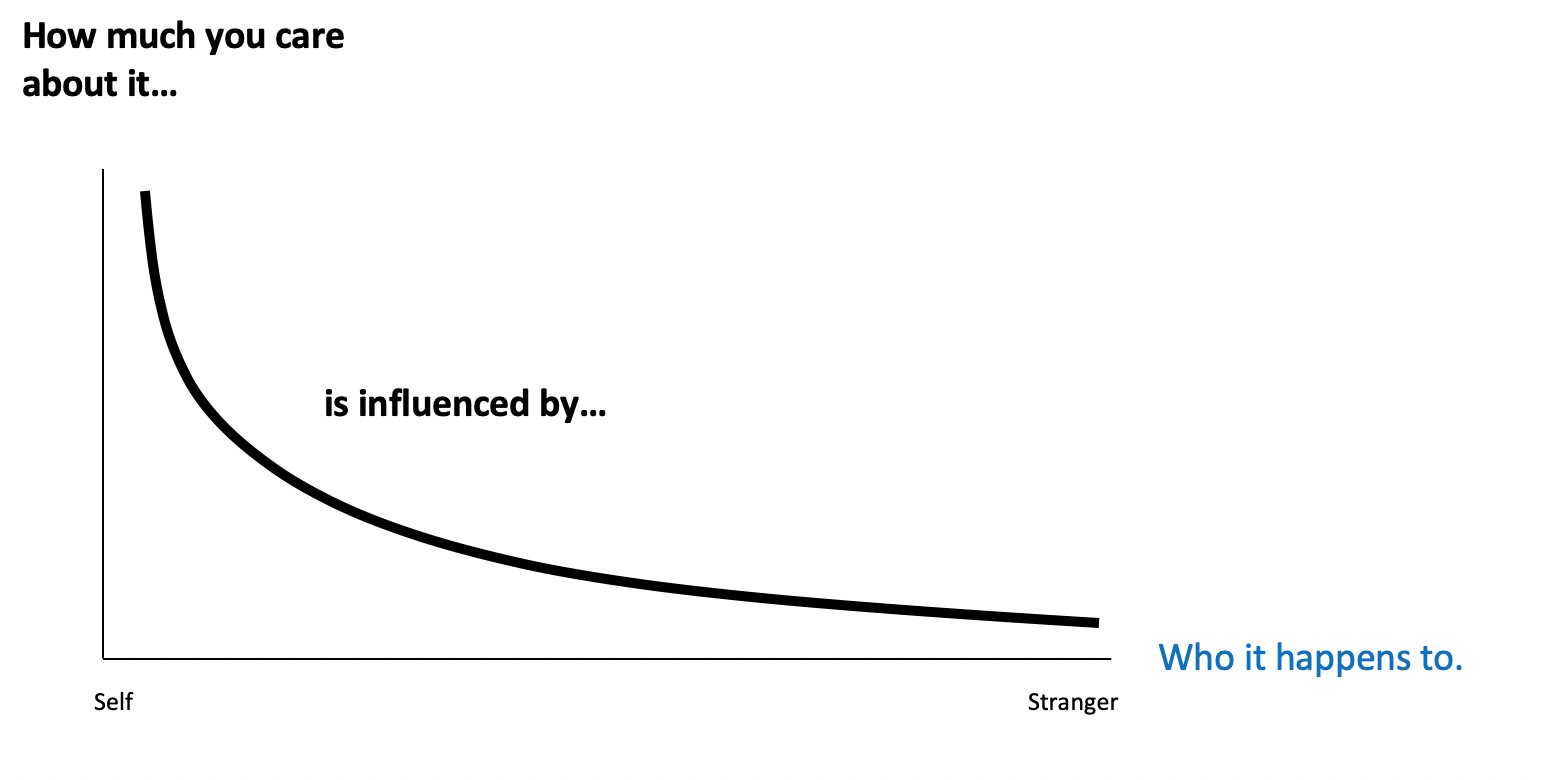Behavioral scientists like to talk about how some human decisions are “predictably irrational,” meaning that they aren’t objectively the best choice, but we persist in them anyway. For example, why do so many of us put off saving and investing for tomorrow in favor of buying more stuff today? Why don’t we seem to care enough about retirement savings until it’s too late to catch up? Why is the immediate so much more important to us than the far-off? Are we really just irrational creatures?
I don’t think so. I think we really try to do an honest-to-goodness cost-benefit analysis. The problem is in how we picture trade-offs, mentally.
It’s All in Your Head
Anytime you decide between two things, you create a model of the scenario in your mind. You think about what will happen if you do A, and what would happen if you do B. You look at outcomes A and B side by side, and you decide which one you want the most. This is all completely straightforward and rational.
But here’s the booby trap: Unlike the physical world, our mental models are built on something called “psychological distance,” and that changes the game completely.
Physical distance is a measure of how far apart things are in space. Psychological distance is a measure of how far apart things feel according to your mind’s eye. It’s how we measure the “space” where ideas live. Any time you imagine an outcome, that outcome takes place in psychological space, and it turns out that psychological space operates by a few basic rules. Those rules affect how we imagine trade-offs.
It sounds complicated, but it’s not. In fact, it’s so intuitive that we talk about it all the time. You have “close” friends and “distant” relations. There are things in the “near term” and things that are “far off” in time. We even speak of “remote” possibilities, and we have laws requiring judges and doctors to recuse themselves from cases where they are “too close” to be objective. That’s psychological distance. It’s at the core of how we think.
“Spatial thinking is the foundation of thought. Not the entire edifice, but the foundation.” --Barbara Tversky, 2019
Barbara Tversky is a Stanford Professor who studies how our brains encode information. I don’t think it’s a coincidence that her husband, Amos, was one of the fathers of behavioral economics. Her understanding of how the mind maps ideas, combined with his work in financial decision-making, would have made for riveting dinner conversation (seriously).
Amos Tversky’s work on measuring psychological distances pre-dates his work on Prospect Theory (which won him a Nobel Prize), and I based a lot of my early research on his work and the repeated studies that came after, which supported it. Here’s what we know: We weigh trade-offs by imagining them, and we imagine them in psychological space.
As I said before, psychological space seems to have some rules that govern how we “see” things in our mind, and one of the rules of psychological space trips us up out here in the physical world.
Size Matters
The first rule of psychological space is this: Things that are far away should look smaller than things that are close up.
Think about a landscape painting. In that picture, every brush stroke is the same actual distance from your eye, so how does the painter show what is close and what is far off? Two ways: size and clarity. Things in the foreground tend to be larger and more clearly defined than things in the background. Research suggests we do the same with ideas. The further away something feels to us, the less mental space we give it. We don’t bother with fine detail when thinking about something that might happen in 20 years, but something that you expect to happen today will take up more psychological space in your mind. This tendency to mentally shrink things that we imagine to be far off is called “discounting.” When the thing we are imagining is far off in time, it’s called Present Bias.
The Physics of Thought
We discount things on (at least) four criteria.
For example, we discount things that we don’t think are very likely to happen.

We do the same thing with time…

Where something happens…

And who it happens to…

This explains why we care so very much about something that is definitely happening, right here, right now, to us personally (close on all four measures) than we do if the same thing might happen, on the other side of the world, 100 years from now, to a stranger (distant on all four measures).
Back to the Trade-Offs
Things up close just feel more important than things far away. This is why it’s so hard to get motivated to do things we know are good for us in the long run, but don’t have an immediate benefit--or worse, they cost us in the here and now.
If going to the gym means drudgery today so that Future You can be in shape, the way you picture that future matters. The further away that payoff feels to you--whether because you think you’ll never get there, you don’t want to wait that long, or whatever--the less chance it has of outweighing your measure of how much you’ll dislike working out right now. You pay the cost now, and because that’s upfront in your mind’s eye, it looms large, but you don’t get the payoff until that imaginary day in the future, which feels abstract and far away. That means that your comparison of their respective values is going to be weighted all wrong.
It’s the same with saving and waiting years for long-term investments to bear their fruits.
The more you discount the value of having that money in the future, the more you will prefer spending it today.
That’s the effect of present bias: It magnifies things that are already close, and shrinks things that are far off. We can’t really stop our brains from going down this path, but we can counter some of its effects.
Next week I’ll talk about a Smart Shortcut that you can learn so that you can offset the effects of Present Bias at least partially. For now, just observe your mind a bit this week. Try to notice psychological distance. Specifically:
“Do you find yourself picturing things in the future a bit fuzzier than what’s happening tomorrow?”
“Do you notice your mental pictures affecting your feelings about things?”
Take a step back and try to observe your own thoughts and notice how you build your mental models. An important part of avoiding booby traps is learning what they look like. Next week, we’ll tackle how to disarm Present Bias.







.png)









